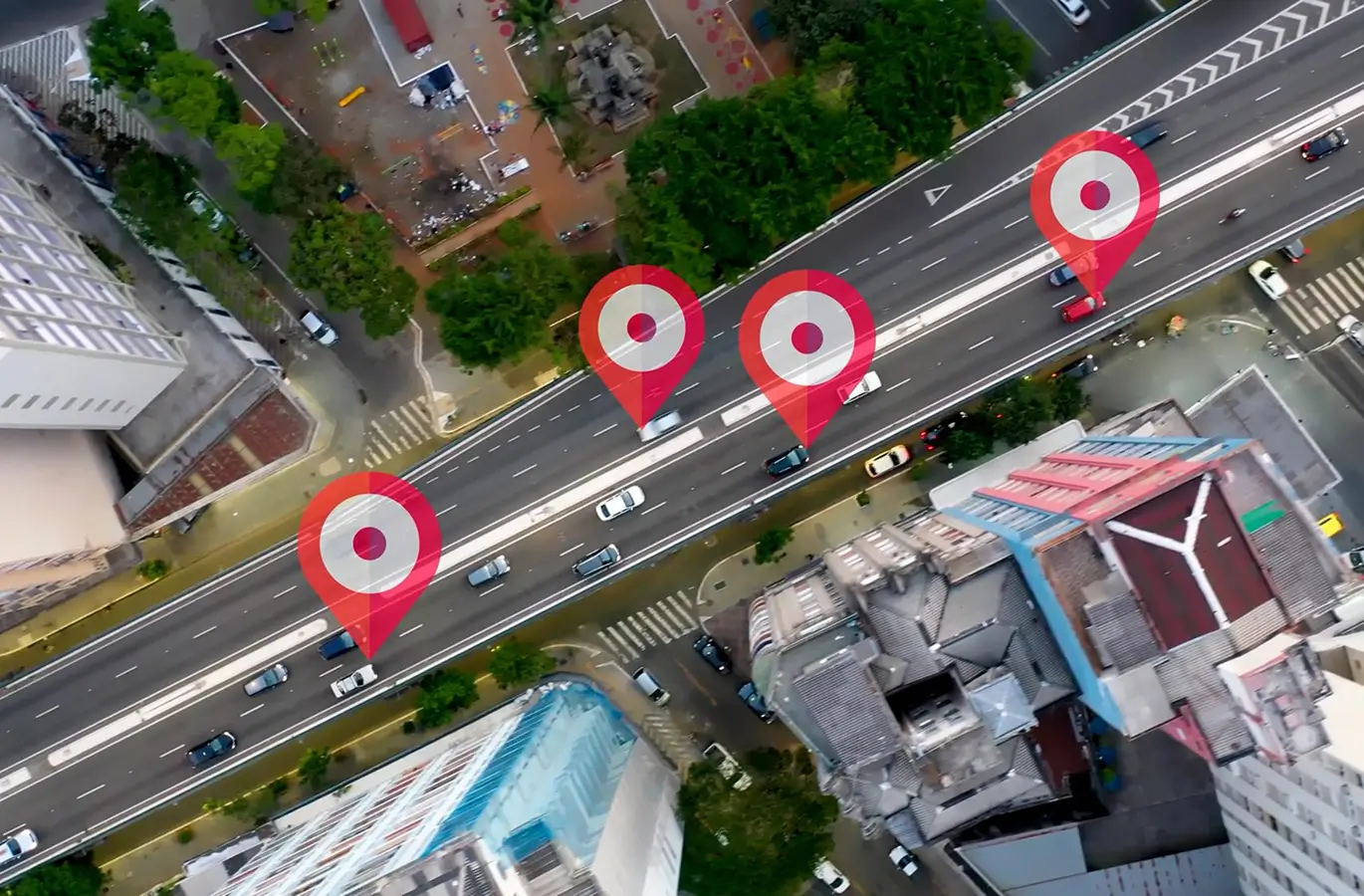Fleet and logistics teams have perfected the art of tracking vehicles. They know when a truck is due for service, how many miles it has logged, and whether it is compliant with inspections. Yet when it comes to tracking customers with the same precision, many businesses still rely on scattered spreadsheets, disconnected CRM systems, and manual inbox searches.
This imbalance is costly. Without reliable customer data, fleets risk missed renewals, delayed communication, and poor visibility into the accounts that matter most. The result is a well-managed fleet paired with fragile customer relationships.
Customer Data Management (CDM) software changes that equation. Instead of chasing details across systems, teams work from a single, accurate profile of every customer. Contracts, compliance records, invoices, and service interactions are no longer hidden in silos, but are now accessible to every department.
In this article, we will explore what customer data management software means for fleet and logistics operations, the core features to prioritize, and the leading categories of tools to consider. More importantly, we will demonstrate how the right software can transform customer relationships from reactive to strategic, empowering fleets to grow without compromising their most valuable asset: the customer.
What Is Customer Data Management Software for Fleets?
Customer Data Management (CDM) software is designed to consolidate all customer-related information into a single system. In most industries, it means combining marketing, sales, and service records. For fleets and logistics, the purpose is more specific: connecting customer accounts with operational data such as vehicle service history, compliance reports, dispatch details, and contract obligations.
In a typical fleet, customer information is scattered across multiple platforms. Billing systems contain invoices. Dispatch software stores trip records. Compliance logs sit in separate databases. Support teams keep service notes in email or spreadsheets. The result is a fragmented picture where no one has the full story of a customer’s relationship with the business.
CDM software solves this by creating a unified profile for every customer. Each profile includes contract details, service requests, compliance checks, billing history, and performance metrics. This single source of truth is accessible across departments, ensuring accounting, operations, and customer service teams all work with the same data.
Unlike a traditional CRM that focuses mainly on contacts and sales pipelines, CDM software is tailored to operations. It not only reveals who the customer is, but also how their business interacts with your fleet daily. This operational lens is what makes customer data management software an essential upgrade for modern fleets.
Why Fleet and Logistics Teams Need Specialized Tools
Fleet and logistics companies handle far more than just moving vehicles from point A to point B. They manage contracts, compliance requirements, service histories, and customer expectations. Yet, most rely on generic tools that were never designed for this level of complexity. Without specialized customer data management software, several challenges emerge.
1. Fragmented Records Across Departments
Customer data often lives in silos. Dispatchers track trips in one system, billing teams use another, and compliance officers maintain separate logs. When these records do not connect, staff spend valuable time piecing together the customer story instead of focusing on service.
2. Risk of Missed Renewals and Lost Revenue
In logistics, contracts and renewals drive long-term profitability. If account managers cannot see renewal dates or service performance at a glance, customers slip through the cracks. Competitors with better data visibility gain an advantage.
3. Compliance Gaps and Liability
Regulatory compliance is non-negotiable. When customer records are not linked to DVIR reports, inspections, or service agreements, audits become stressful and prone to errors. Missed documentation can lead to penalties or damaged trust.
4. Poor Visibility Into Customer Health
Without clear metrics, fleets struggle to identify which accounts are profitable, which require more support, and which are at risk of churn. Decisions end up being reactive rather than data-driven.
Generic software cannot address these needs because it was not built for fleets. Specialized CDM tools are designed to integrate with dispatch, compliance, and fleet management systems, providing a comprehensive view of the customer. This enables businesses to strengthen relationships, mitigate risk, and make informed decisions at every stage of service.
Core Features to Look For
Not all customer data management software is equal. For fleet and logistics companies, the right tool must do more than store contact details. It should connect customer information with operations, compliance, and financial performance. Below are the features that matter most.
1. Unified Customer Profiles
Every customer should have a single profile that contains all relevant information, including contracts, service requests, compliance checks, invoices, and a communication history. This eliminates duplicate records and ensures all teams see the same information. With unified profiles, dispatch, finance, and customer service can collaborate without confusion.
2. Compliance and Service History Tracking
Fleet businesses live and breathe compliance. A robust CDM tool directly links customer accounts to DVIR logs, safety inspections, and service records. This enables audits to be conducted more efficiently and provides a transparent record of service delivery. Customers gain confidence knowing their records are accurate and accessible.
3. Integration With Fleet Management Systems
Customer data cannot sit apart from operational data. The best CDM software integrates seamlessly with fleet management platforms, dispatch tools, and billing systems. When customer and vehicle data work together, managers can track performance across the entire lifecycle, from contract signing to final delivery.
4. Profitability Insights by Account
Not all customers contribute equally to the bottom line. A CDM tool should calculate profitability by account, showing which customers generate steady revenue and which drive costs through frequent service demands. These insights guide contract negotiations and resource allocation.
5. Real-Time Data Access for Teams
Customer information must be available when teams need it most. Real-time dashboards allow operations staff to monitor service status, billing teams to confirm payments, and account managers to prepare for renewals. This speed improves decision-making and reduces costly delays.
6. Role-Based Access and Security
Fleet data often includes sensitive information. Strong customer data management software provides role-based access, ensuring each department views only the information it needs. This protects privacy while maintaining collaboration.
Top Customer Data Management Tools for Fleet and Logistics
The market for customer data solutions is crowded, but most tools can be categorized into three broad categories. Each serves different needs depending on fleet size, business model, and level of digital maturity. By comparing categories rather than chasing individual brand names, operators can focus on finding the best fit for their needs.
1. Fleet-Focused CDM Platforms
These tools are built specifically for fleets and logistics providers. They prioritize compliance, service history, and integration with dispatch systems. For businesses where audits, renewals, and uptime are top concerns, fleet-focused CDM platforms provide the strongest alignment with daily operations.
2. Integrated CDP + CRM Hybrids
Some businesses need to strike a balance between customer engagement and operational visibility. Hybrid tools combine traditional CRM functions with customer data platform capabilities. They are useful for fleets that want to track contracts and renewals while also managing sales opportunities and client communications.
3. Scalable SaaS Platforms
Large logistics operators often require advanced analytics, role-based security, and custom integrations to support their operations. Scalable SaaS platforms provide these features along with the ability to handle high data volumes across multiple regions. While not fleet-specific, they are adaptable and powerful for enterprises that can invest in customization.
CDM Software Categories for Fleets
| Category | Best For | Strengths | Limitations |
| Fleet-Focused CDM | Fleets prioritizing compliance and service | Tailored features: DVIR logs, service tracking, dispatch link | May lack advanced sales or marketing tools |
| Integrated CDP + CRM Hybrid | Fleets balancing sales and operations | Combines contracts, renewals, and customer engagement | Less specialized for compliance reporting |
| Scalable SaaS Platform | Large logistics and enterprise operators | High-volume data handling, global scalability, deep analytics | Requires customization and higher cost |
By evaluating categories instead of chasing a one-size-fits-all solution, fleet leaders can identify which type of software fits their immediate challenges while leaving room to scale.
How to Select the Right Tool for Your Team
Choosing customer data management software is not just about features; it’s also about functionality. It is about finding a platform that integrates seamlessly into your daily workflow and scales with your business as it grows. A structured approach ensures that you pick a solution that delivers value rather than complexity.
1. Identify Your Pain Points
Start by mapping out where customer data is currently stored. Note the frustrations, such as duplicate records, missed renewals, compliance gaps, or manual processes. This exercise clarifies what problems the tool must solve.
2. Prioritize Integration With Existing Systems
The right software should connect with your dispatch, compliance, and fleet management systems. Integration prevents silos and ensures data flows across operations, finance, and support teams.
3. Balance Power and Usability
Complex software that your team avoids using has little value. Look for platforms that combine strong functionality with an intuitive interface. Training and adoption resources should be part of the package.
4. Plan for Growth
Your needs today may not match your needs in five years. Choose software that can handle larger data volumes, more users, and advanced analytics without requiring a full replacement.
Building a Data-Driven Culture in Fleets
Customer data management software is only as powerful as the culture that surrounds it. Simply installing a new platform will not guarantee better decisions. Fleets must encourage teams to use data consistently and treat it as a shared resource rather than a side task.
Training and Adoption
Start with clear onboarding. Train dispatchers, finance staff, and customer service teams on how to use the platform in their daily work. The goal is not just to enter data, but to understand how accurate records reduce errors and improve customer outcomes.
Leadership Buy-In
When managers use dashboards in meetings, reference performance metrics in planning, and reward data-driven decisions, employees see the system as essential rather than optional. Leadership sets the tone for adoption.
Cross-Department Collaboration
Fleet operations are inherently interconnected. Dispatch affects billing, which in turn affects renewals, and compliance ultimately impacts customer trust. A culture of data-sharing ensures that no department operates in isolation. The CDM software becomes the hub where everyone contributes and benefits.
Continuous Improvement
Customer data should be reviewed regularly, not only during audits. Schedule quarterly reviews of data accuracy and system performance. This creates a cycle of improvement where the software evolves with the business.
Building a culture around data ensures that the CDM tool delivers on its promise: clearer insights, stronger customer relationships, and smarter growth.
Wrapping Up!
Fleet and logistics teams excel at tracking vehicles, but customer data has often been treated as an afterthought. This imbalance limits growth and leaves businesses vulnerable to compliance risks, missed renewals, and weak customer relationships. Customer data management software addresses these gaps by creating a single, reliable system for every contract, service record, and interaction.
The right tool does more than organize information. It provides operational clarity, integrates with fleet management systems, and converts data into actionable insights that inform decisions. Whether the priority is improving compliance, reducing downtime, or strengthening retention, CDM software delivers measurable value.
By investing in a platform tailored to fleet needs and pairing it with a culture of data-driven decision-making, companies gain both efficiency and trust. Supported by solutions such as REACH’s fleet management tools, operators can unify compliance, service, and customer engagement under one roof. The result is not just better data, but a stronger foundation for long-term growth.
Key Takeaways
- Customer data management (CDM) software consolidates scattered customer records into a single, reliable system.
- Fleets without CDM tools face challenges such as compliance gaps, missed renewals, and poor visibility into customer value.
- The most important features include unified profiles, compliance tracking, fleet system integration, profitability insights, real-time dashboards, and secure access controls.
- Software categories can be grouped into three main categories: fleet-focused platforms, CDP and CRM hybrids, and scalable SaaS systems.
- A structured selection process, mapping pain points, prioritizing integration, balancing usability, and planning for growth, ensures the right fit.
- Building a culture of adoption and leadership buy-in maximizes the long-term value of customer data management software.
Frequently Asked Questions (FAQs)
-
What is customer data management software in fleet operations?
Customer data management (CDM) software is a system that consolidates all customer-related records, including contracts, invoices, compliance logs, and service history, into a single platform. For fleets, it connects customer accounts directly to operational data, creating a single source of truth.
-
How is CDM software different from a CRM?
A CRM focuses mainly on sales pipelines and contact management. CDM software takes it a step further by integrating operational details, including compliance records, dispatch activity, and profitability metrics. For fleets and logistics, CDM tools provide a more complete view of the customer relationship.
-
Why do fleets and logistics teams need specialized CDM tools?
Generic platforms are not designed for environments that require strict compliance. Specialized CDM software ties customer accounts to DVIR reports, inspections, and service histories. This ensures accuracy, reduces liability, and strengthens customer trust.
-
Is CDM software suitable for smaller fleets?
Yes. Modern CDM platforms scale to business size. Small fleets utilize them to identify profitable customers and enhance billing accuracy. In contrast, larger fleets rely on them for compliance reporting and managing data across multiple regions.
-
What features should I prioritize when evaluating CDM software?
The most important features are unified customer profiles, compliance and service history tracking, integration with fleet management systems, real-time dashboards, profitability insights, and secure role-based access.
-
How does CDM software create long-term value?
By improving visibility and accuracy, CDM tools enable fleets to anticipate customer needs, strengthen renewals, and minimize downtime. Over time, this builds stronger customer relationships and supports scalable growth.



